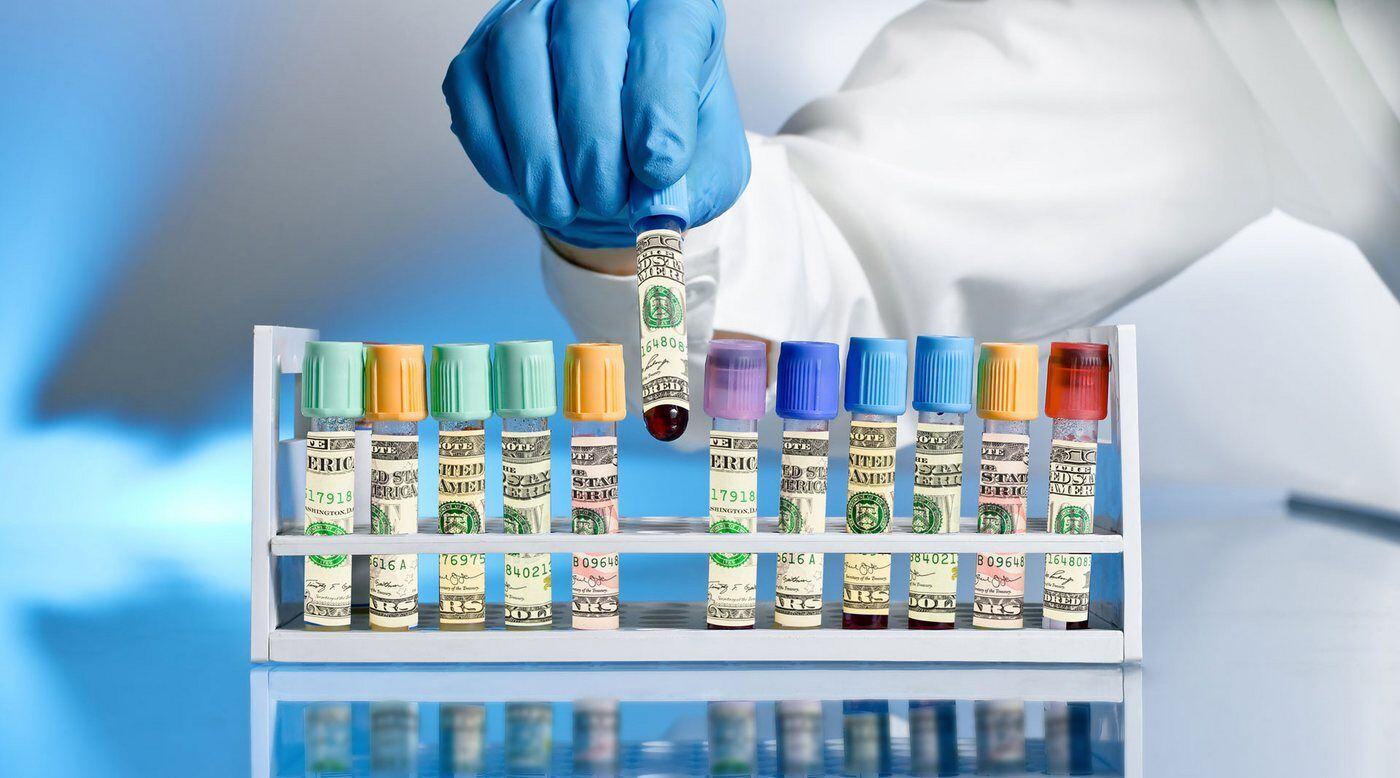What Type of Revenue Cycle Management (RCM) Service or Software does your Laboratory Need?
Laboratories are under more financial pressure than ever. Rising test volumes, shifting payer rules, regulatory changes, and patient expectations all challenge labs’ ability to maintain cash flow and profitability. Effective laboratory revenue cycle management (Lab RCM) is no longer optional—it’s a strategic asset. This post will help you determine whether your lab should invest in in-house Lab RCM software or outsource to a specialized service, and what to look for in each option.
What Is Laboratory Revenue Cycle Management?
Laboratory revenue cycle management refers to the end-to-end financial process of a lab, from test ordering to final payment. Key steps include:
-
Patient registration, scheduling, and insurance verification
-
Test order capture and coding (CPT, ICD, LOINC, etc.)
-
Charge capture and claim submission
-
Denial management and appeals
-
Payment posting & patient billing
-
Reporting, analytics, and compliance monitoring
Lab RCM differs from generic healthcare RCM in that labs often handle high volume of small claims, very specific coding requirements (especially for clinical, molecular, genetic tests), and stringent payer and regulatory demands (e.g. CLIA, PAMA, LDT oversight).
Why Lab RCM Matters More Now
Several trends are making Lab RCM more critical:
-
Increasing regulatory scrutiny: enforcement of proper documentation, price transparency (e.g. No Surprises Act), oversight of laboratory-developed tests (LDTs).
-
Growth of complex testing (molecular diagnostics, genetic tests) which raise coding, authorization, and reimbursement complexity.
-
Higher payer demands: stricter edits, more frequent denials, more prior authorization requirements.
-
The push toward automation, AI, predictive analytics to reduce errors, speed up claims, and reduce revenue leakage.
Because of this, labs face real risk: delayed payments, high denial rates, audit exposure, and unsustainable administrative burden. Having robust Lab RCM—whether via software, service, or hybrid—is essential for financial health.
Key Components of Effective Lab RCM
When evaluating or building your Lab RCM capability, pay attention to these components:
| Component | What It Involves |
|---|---|
| Order Entry & Test Ordering Accuracy | Capturing test orders correctly, ensuring required info is present, integrating with ordering systems or EHRs. Errors early in the order cascade to denials. |
| Insurance Verification & Eligibility Checks | Verifying coverage, benefit details, patient status, and whether pre-authorization is needed. |
| Coding and Charge Capture | Correct CPT/ICD/LOINC, capturing all billable services, avoiding under-coding or over-coding. |
| Clean Claims Submission | Scrubbing claims for errors, ensuring documentation meets payer requirements. |
| Denial Management & Appeals | Identifying root causes, appealing denials promptly, using analytics to reduce future denials. |
| Payment Posting & Collections | Reconciling payments, managing patient balances, collecting co-pays or balances due. |
| Reporting, Analytics & KPI Monitoring | Tracking metrics: clean claim rate, days in AR, denial rate, revenue leakage, payer aging, etc. |
| Compliance, Security & Regulatory Readiness | Ensuring lab meets HIPAA, CLIA, PAMA, FDA (for LDTs where relevant), price transparency, cybersecurity, etc. |
In-House RCM vs Outsourced vs Hybrid: What Fit Depends On Your Lab
Here are pros, cons, and key considerations when deciding whether to keep RCM in-house, outsource, or use a hybrid model:
| Option | Pros | Cons | Good For Labs That… |
|---|---|---|---|
| In-House Software / Self-Managed RCM | Full control; immediate visibility; potential cost savings long-term; tight integration with LIS/EHR and operations | High upfront cost; ongoing maintenance; regulatory and payer changes require internal expertise; staffing/training burden | Have sufficient volume; have internal technical/billing expertise; prefer owning data; stable payer landscape; ready to invest in software & staffing |
| Outsourced RCM Services | Expertise, reduced overhead, quicker implementation; access to up-to-date coding/regulation knowledge; less burden on internal staff | Less direct control; costs are ongoing; potential lag in visibility/reporting; vendor risk (quality, support) | Need to scale quickly; have limited billing resources; wanting to reduce denials and improve cash flow without large internal investment |
| Hybrid Model | Balance of control + external expertise; can internalize “core” functions and outsource more specialized tasks (e.g. appeals, compliance review) | Requires managing a vendor relationship; clear division of responsibilities needed; potential complexity in workflows |
Labs with mid-size volumes; wanting flexibility; aiming to incrementally build stronger internal capabilities without full risk |
What to Look for in Lab RCM Software or Service Providers
Whether you're evaluating software or a service, these capabilities help ensure you get strong ROI and sustainable performance
-
Real-time dashboards and strong analytics (including root-cause denial insights)
-
Automated eligibility verification & payer rule engines
-
Clean claim rate optimization, claim scrubbing, and submission tracking
-
Robust denial management tools & workflows
-
Integration with LIS, EHR, and other lab operational systems
-
Regulatory & compliance module that stays current with policy changes (FDA, CMS, CLIA, PAMA, etc.)
-
Patient billing & collections tools with flexible options, clear statements, good patient communication
-
Vendor/service support: training, customer service, transparency, SLAs
Emerging Trends & Best Practices in Lab RCM
To stay ahead, labs should adopt practices and technologies aligned with what leading labs are doing:
-
AI and Automation: Use AI for eligibility checks, predictive denial prevention, automating claim edits, and even automating appeal drafting.
-
Data-Driven Decision Making: Regular audits, KPI dashboards, revenue leakage analyses. Use data to spot bottlenecks and optimize workflows.
-
Proactive Denial Prevention: Don’t just respond to denials; build processes that catch errors before submission. Monitor payer behavior.
-
Regulatory Agility: Monitor changes in lab testing regulation (like LDTs), payer contract rules, price transparency laws. Be ready to adapt.
-
Patient-Centered Billing: Clarity in patient billing statements, flexible payment options, up-front cost estimates. As patients bear more cost, labs that provide transparency and good communication reduce bad debt.
Signs It’s Time to Upgrade Your RCM Process
Here are signals that may indicate your current Lab RCM setup is no longer sufficient:
-
High or rising denial rates (especially due to coding or payer rule changes)
-
Long days in AR, cash flow gaps or delays
-
Frequent audits or compliance issues
-
Significant revenue leakage (missed charges, under-billing, etc.)
-
Regulatory changes you are struggling to keep up with
-
Internal staffing constraints; difficulty maintaining up-to-date expertise
FAQs
What’s the difference between generic RCM and laboratory RCM?
Lab RCM involves handling lab-specific codes (CPT/LOINC/etc.), high claim volumes, more frequent payer specificity (specialty testing, molecular diagnostic), and often tighter regulatory oversight.
How much does Lab RCM software cost vs outsourcing?
Costs vary widely depending on test volume, complexity, integrations, and service levels. Software tends to have upfront licensing + implementation costs plus ongoing maintenance. Outsourced services charge either a percentage of collections, per claim fees, or hybrid models.
Can smaller labs benefit as much as large ones?
Yes. Smaller labs can gain major improvements in cash flow and reduce denials by using even basic RCM tools or partnering with a service. The right scaled solution matters.
Next Steps
Laboratory revenue cycle management is a pivotal aspect of financial and operational success in today’s diagnostic and clinical lab environment. Whether you choose in-house software, a service, or hybrid model depends on your lab’s size, complexity, resources, and goals.
If you’re evaluating your Lab RCM options:
-
Map out your current process and metrics (denials, days in AR, revenue leakage)
-
Identify gaps or bottlenecks
-
Compare vendors / services using the criteria above
-
Prioritize scalability, regulatory compliance, and transparency
For labs that want to future-proof, combining strong software with external expertise often delivers the best mix of control, cost efficiency, and financial resilience.
About Gene Spirito, MBA
Gene has been involved in sales and deploying well over 1,000 revenue cycle management and billing solutions for medical practices, groups, networks, and laboratories of every specialty. With more than 25 years’ experience, Gene has guided so many ADS clients toward the configuration that would work best for them such as services through MedicsRCM, or in-house automation with the MedicsCloud Suite. Gene has an undergraduate from Villanova University, and an MBA from Temple University. Not surprisingly, Gene’s an avid Wildcats fan (the VU basketball team).


